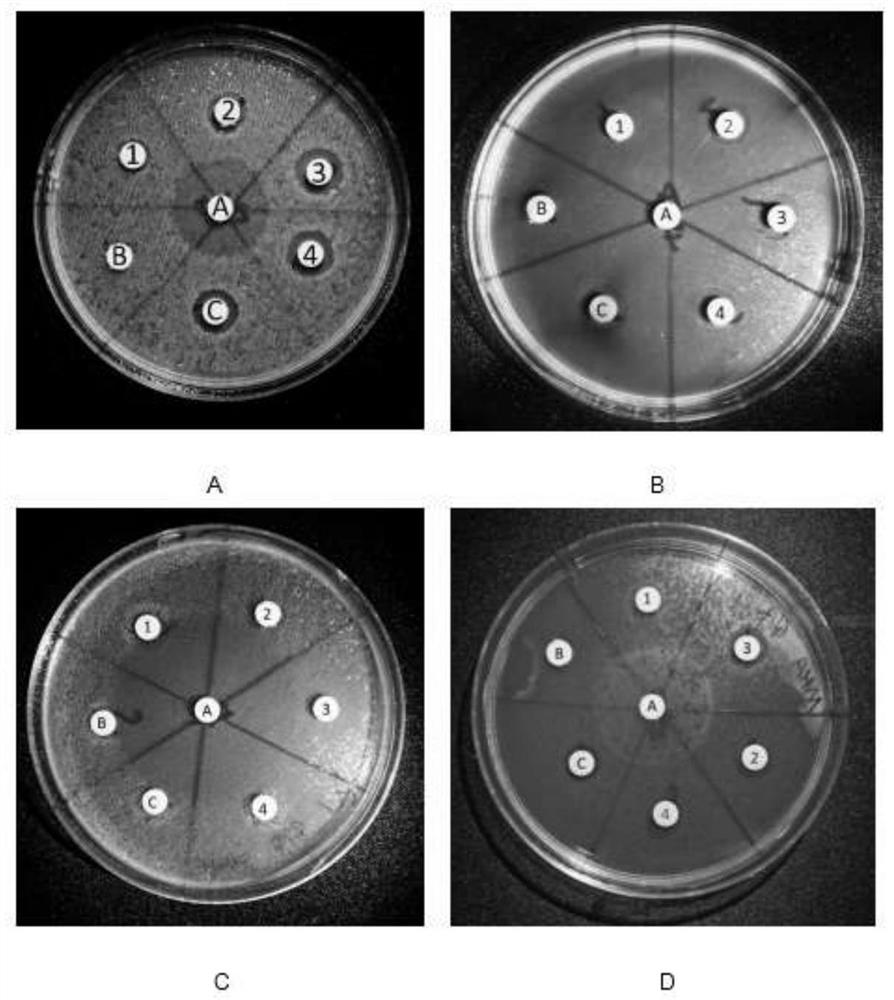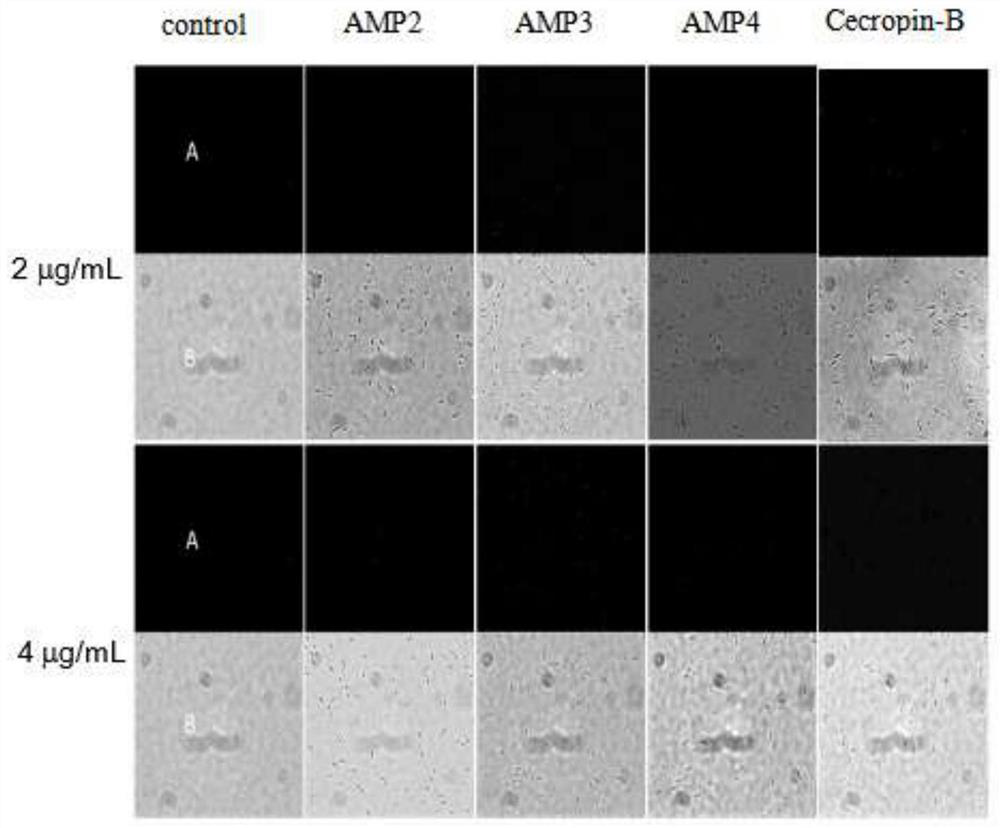Antibacterial peptides with high antibacterial activity and application thereof
A technology of antibacterial activity and antimicrobial peptides, applied in the field of biomedical engineering, can solve problems such as public health, food safety and food safety threats, and achieve the effect of significant antibacterial effect, mature preparation process, and convenient access channels
- Summary
- Abstract
- Description
- Claims
- Application Information
AI Technical Summary
Problems solved by technology
Method used
Image
Examples
Embodiment 1
[0054] Determination of growth curve of experimental strains
[0055] The growth curve of experimental strains was measured by turbidimetric method, and the specific steps were as follows:
[0056] (1) Strain activation: Take 20 L of bacterial solution stored in a glycerol tube and add it to 100 mL of MHB medium for 18 hours at 37°C.
[0057] (2) Numbering: Take 11 large test tubes filled with meat extract peptone liquid medium, and mark the culture time with a marker pen, that is, 0, 1.5, 3, 4, 6, 8, 10, 12, 14, 16 hours.
[0058] (3) Inoculation: Accurately draw 200L of E. coli culture solution with a pipette gun, and inoculate them into 11 numbered large test tubes of meat extract peptone liquid medium, shake after inoculation, and mix the cells evenly.
[0059] (4) Cultivation: the inoculated 11 test tubes were placed on a shaker, and cultured with shaking at 37°C. Take out the test tubes numbered corresponding to the time at 0, 1.5, 3, 4, 6, 8, 10, 12, 14, and 16 hours ...
Embodiment 2
[0063] 1. Antimicrobial peptide inhibition zone experiment
[0064] The disc agar diffusion method was used to measure the diameter of the antibacterial peptide inhibition zone, and the synthetic Cecropin-B antimicrobial peptide and ampicillin were used as positive controls. The method refers to the American Clinical and Laboratory Standards Institute (CLSI). The specific experimental steps are as follows:
[0065] (1) Make antimicrobial peptide drug-sensitive paper sheets with a drug content of 50 g.
[0066] (2) Separation and purification of test strains;
[0067] (3) Preparation of inoculum solution: Pick 3 colonies with a diameter of about 1 mm from the purified test bacteria plate and inoculate them in 3 mL of MH broth medium, and incubate at 35°C for 5-6 hours to make the test bacteria reach the target level. number of growing seasons. Subsequently, the concentration of the bacterial liquid in the logarithmic growth phase was corrected to 0.5 McFarland standard with p...
Embodiment 3
[0085] PI staining test
[0086] The fluorescent dye PI (propidium iodide) is a nuclear staining reagent that can stain DNA and is commonly used in the detection of cell apoptosis. It is an ethidium bromide analog that emits red fluorescence upon intercalation into double-stranded DNA. PI cannot pass through the living cell membrane, but it can pass through the damaged cell membrane and stain the nucleus. Based on this principle, we used Cecropin-B (H.cecropia) as a positive control, and used PI staining to observe the damage of E.coli K-12 cell membrane after the action of antimicrobial peptides, so as to explore its possible inhibitory effect. bacteria mechanism. The specific operation method is as follows:
[0087] (1) Strain purification.
[0088](2) Pick 3 colonies with a diameter of about 1 mm from the purified test bacteria plate and inoculate them in 3 mL of MH broth medium, and incubate at 35°C for 5-6 hours to allow the test bacteria to reach the logarithmic grow...
PUM
| Property | Measurement | Unit |
|---|---|---|
| pore size | aaaaa | aaaaa |
Abstract
Description
Claims
Application Information
 Login to View More
Login to View More - R&D
- Intellectual Property
- Life Sciences
- Materials
- Tech Scout
- Unparalleled Data Quality
- Higher Quality Content
- 60% Fewer Hallucinations
Browse by: Latest US Patents, China's latest patents, Technical Efficacy Thesaurus, Application Domain, Technology Topic, Popular Technical Reports.
© 2025 PatSnap. All rights reserved.Legal|Privacy policy|Modern Slavery Act Transparency Statement|Sitemap|About US| Contact US: help@patsnap.com



